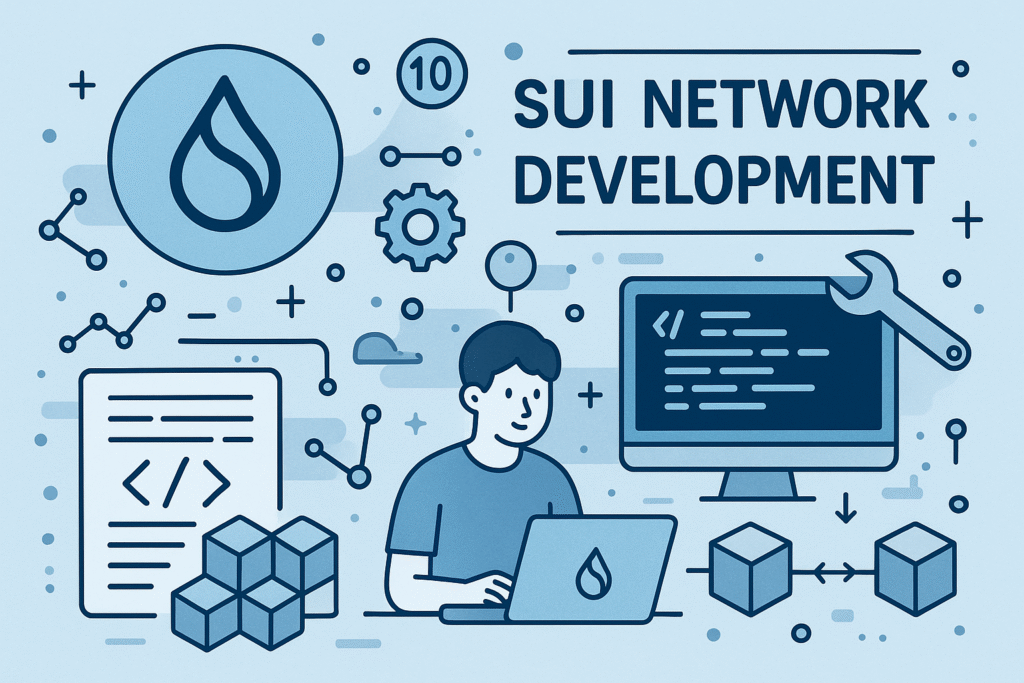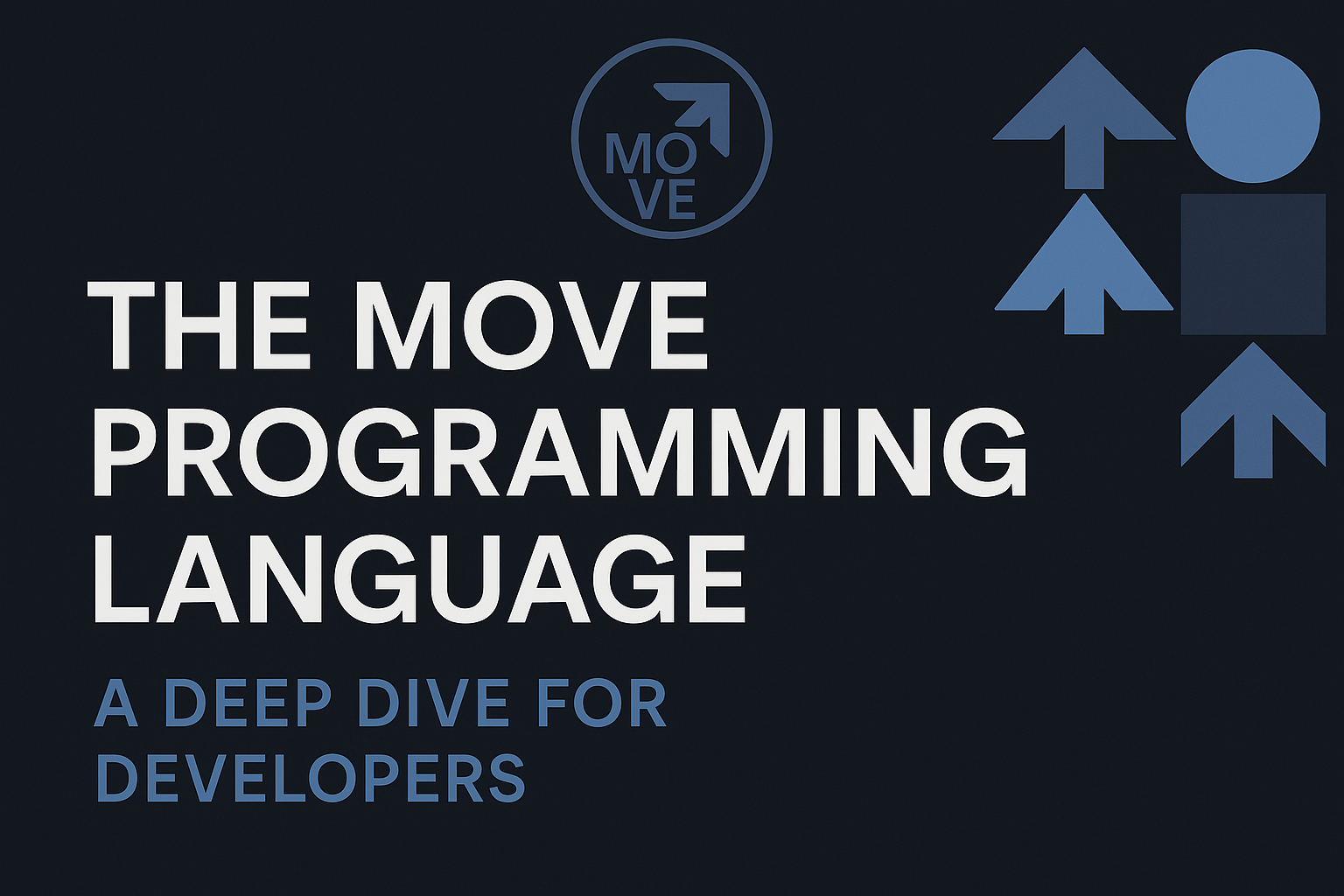While most developers are still wrestling with Ethereum’s gas fees and Solana’s network outages, a quiet revolution is happening in the blockchain development space. Sui Network development has emerged as the secret weapon of choice for top-tier developers who prioritize performance, safety, and scalability over hype.
In 2025, as the crypto industry matures beyond speculative trading into real-world utility, developers are discovering that traditional blockchain architectures simply can’t handle the demands of modern decentralized applications. That’s where Sui Network’s innovative approach to blockchain development comes in, powered by the Move programming language that’s changing how we think about smart contract development.
But what exactly makes Sui Network development so appealing to experienced developers? And why are companies like Microsoft, Samsung, and Red Bull quietly building on Sui while others chase the latest layer-2 solutions? Let’s dive deep into the technical secrets that are making Sui Network the developer’s blockchain of choice.
What Makes Sui Network Development Different from Traditional Blockchains
The Parallel Execution Advantage
Traditional blockchains like Ethereum process transactions sequentially, creating bottlenecks that limit throughput to around 15 transactions per second. Sui Network development breaks this paradigm with its object-centric architecture that enables true parallel execution.
Here’s what sets Sui apart:
- Object-based transactions: Each transaction interacts with specific objects rather than the global state
- Parallel processing: Multiple transactions can execute simultaneously without conflicts
- Instant finality: Simple transactions confirm in under 400 milliseconds
- Predictable costs: Gas fees remain stable regardless of network congestion
Move Programming Language: Safety by Design
The Move programming language isn’t just another smart contract language—it’s a fundamental reimagining of how blockchain applications should be built. Here’s why top developers are making the switch:
Resource-oriented programming model:
- Assets are first-class citizens in the language
- No accidental duplication or destruction of digital assets
- Built-in protections against common vulnerabilities like reentrancy attacks
Linear type system:
- Resources can only be moved, never copied
- Eliminates entire classes of security vulnerabilities
- Formal verification capabilities built into the language
Technical Advantages That Top Developers Can’t Ignore
Performance Benchmarks That Speak for Themselves
Let’s look at the numbers that are convincing developers to choose Sui Network development:
| Metric | Sui Network | Ethereum | Solana | Polygon |
|---|---|---|---|---|
| Transaction Throughput | 297,000 TPS | 15 TPS | 3,000 TPS | 7,000 TPS |
| Finality Time | <400ms | 12 minutes | 2.5 seconds | 2 minutes |
| Average Gas Cost | $0.0005 | $15-50 | $0.00025 | $0.01 |
| Network Uptime (2024) | 99.9% | 99.95% | 96.2% | 99.8% |
| Developer Tools | Comprehensive | Mature | Growing | Moderate |
Data sources: Sui Foundation, Etherscan, Solscan, PolygonScan (January 2025)
Developer Experience Revolution
Sui Network development offers tooling and developer experience that traditional blockchain platforms simply can’t match:
- Sui Move Analyzer: Real-time code analysis and optimization suggestions
- Programmable Transaction Blocks: Compose complex operations in a single transaction
- Native TypeScript SDK: Full-featured client library with excellent documentation
- Sui DevNet: Fast, reliable testnet with generous faucets
- Move Prover: Formal verification tools for critical smart contracts
Real-World Success Stories: Why Companies Choose Sui
Case Study: GameFi Revolution on Sui
The gaming industry has found a natural home in Sui Network development due to its unique advantages:
Axie Infinity successor projects are building on Sui because:
- True ownership of in-game assets through Move’s resource model
- Instant microtransactions for seamless gameplay
- Parallel processing enables real-time multiplayer experiences
- Lower costs make play-to-earn models sustainable
Key gaming projects on Sui in 2025:
- Worlds Beyond: 500K+ daily active users
- Sui 8192: Puzzle game with tokenized achievements
- Cosmocadia: Space exploration MMO with player-owned planets
DeFi Innovation Through Move Programming
DeFi protocols are discovering that Sui Network development enables financial primitives that weren’t possible before:
- Atomic multi-asset swaps: Trade multiple tokens in a single transaction
- Composable protocols: Build complex financial instruments through object composition
- Gas-efficient operations: DeFi strategies that don’t eat away profits through fees
- MEV protection: Parallel execution reduces front-running opportunities
The Move Programming Language: A Deep Dive for Developers
Why Move Succeeds Where Solidity Falls Short
Traditional smart contract languages like Solidity were designed as general-purpose programming languages adapted for blockchain. Move was built from the ground up for blockchain development:
Formal verification capabilities:
- Mathematical proofs of smart contract correctness
- Automated detection of potential vulnerabilities
- Specification language for defining contract behavior
Learning Curve and Developer Adoption
Many developers initially worry about learning a new programming language, but Sui Network development with Move has proven surprisingly approachable:
For Rust developers:
- Familiar syntax and concepts
- Similar ownership model
- Easy transition path
For Solidity developers:
- More intuitive asset management
- Better debugging and testing tools
- Safer smart contract patterns
Learning resources in 2025:
- Official Sui Move Book (updated monthly)
- Interactive tutorials on Sui Academy
- Weekly developer workshops
- 500+ open-source examples on GitHub
Economic Advantages for Developers and Users
Sustainable Tokenomics Model
Unlike many blockchain projects, Sui Network development benefits from a thoughtfully designed economic model:
Gas fee structure:
- Predictable costs regardless of network congestion
- Storage fees incentivize efficient data usage
- Validator rewards align with network security
Developer incentives:
- Gas fee rebates for popular applications
- Ecosystem grants for innovative projects
- Revenue sharing for protocol contributions
Cost Comparison Analysis
Here’s what it actually costs to run common operations across different networks (January 2025 data):
| Operation | Sui Network | Ethereum | BSC | Polygon |
|---|---|---|---|---|
| Token Transfer | $0.0003 | $8.50 | $0.20 | $0.008 |
| NFT Mint | $0.005 | $45.00 | $2.50 | $0.80 |
| DEX Swap | $0.008 | $25.00 | $1.20 | $0.15 |
| Complex DeFi | $0.02 | $85.00 | $5.00 | $2.50 |
These figures represent average costs during normal network conditions
Future-Proofing with Sui Network Development in 2025
Upcoming Protocol Improvements
The Sui ecosystem continues to evolve rapidly with major upgrades planned for 2025:
- Mysticate Network Upgrade: Enhanced privacy features
- Parallel VM Optimizations: Further throughput improvements
- Cross-chain Bridge Enhancements: Seamless asset transfers
- Developer Tooling Expansion: More languages and frameworks
Enterprise Adoption Trends
Fortune 500 companies are quietly evaluating Sui Network development for enterprise use cases:
Supply chain management:
- Walmart’s product tracking pilot program
- Unilever’s sustainability verification system
Digital identity:
- Government partnerships in Southeast Asia
- Corporate credential management systems
Financial services:
- Central bank digital currency (CBDC) experiments
- Trade finance automation platforms
Conclusion
Sui Network development represents more than just another blockchain platform—it’s a fundamental shift toward safer, more efficient, and more developer-friendly blockchain infrastructure. The combination of Move programming language, parallel execution architecture, and sustainable economics creates an environment where developers can focus on building innovative applications rather than fighting platform limitations.
As we move deeper into 2025, the developers who choose Sui Network development today will be the ones building tomorrow’s most successful decentralized applications. The question isn’t whether Sui will succeed—it’s whether you’ll be part of the revolution that’s quietly reshaping blockchain development.

